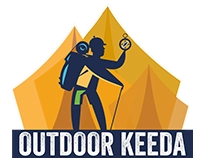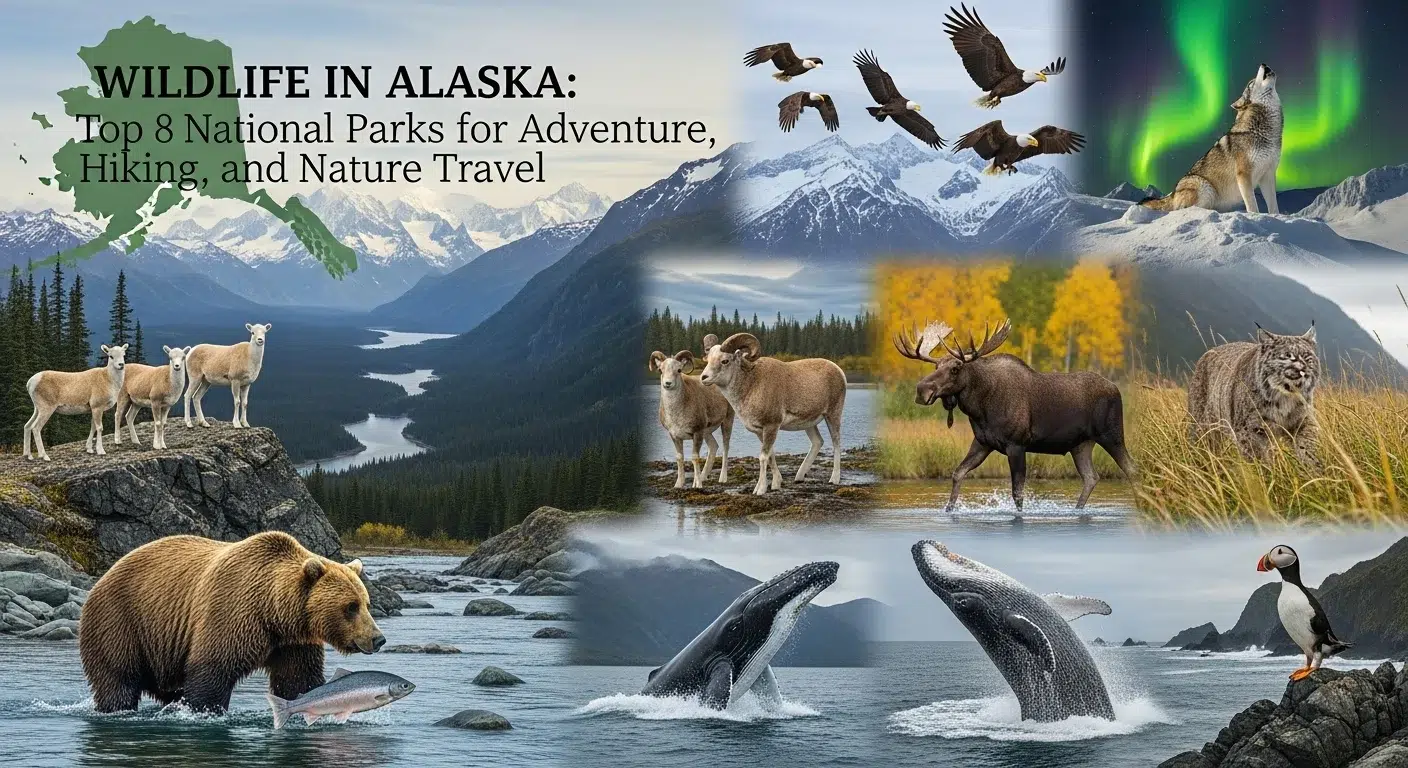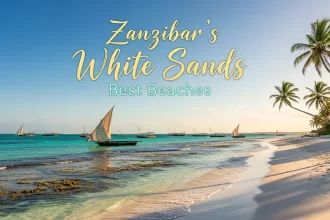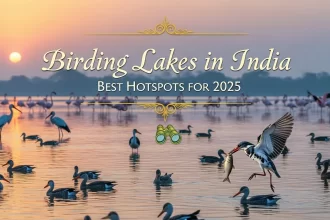Alaska has always been a land of wild beauty, where towering mountains, massive glaciers, and untamed wildlife create an adventure unlike anywhere else. In 2025, the state’s national parks are drawing record numbers of visitors, even as staffing cuts reduce ranger-led programs. Despite these challenges, Alaska remains a paradise for those seeking close encounters with bears, moose, caribou, and whales. From the viral excitement of Fat Bear Week to the timeless appeal of glacier hikes, this guide explores the top 8 national parks in Alaska where unforgettable adventures await.
Why Alaska’s National Parks Are Unique
Alaska is home to more than half of all U.S. national park land, making it a true wilderness frontier. These parks protect ecosystems where Alaska wildlife thrives from grizzly bears and bald eagles to humpback whales and massive caribou herds.
Visitors come not only for the animals but also for the landscapes: fjords carved by ice, sand dunes in the Arctic, and the tallest peak in North America. Seasonal highlights add to the magic summer brings endless daylight for hiking in Alaska, autumn showcases Fat Bear Week in Katmai, and winter offers aurora-lit nights.
In 2025, however, travelers should be aware of changes. Staffing shortages mean fewer guided hikes and educational programs, especially in Denali and Glacier Bay. At the same time, cruise tourism is booming, with nearly 60% of visitors arriving by ship. This combination makes planning ahead more important than ever.
What’s New in 2025: Staffing Cuts and Visitor Experience
Recent reports confirm that Alaska’s national parks are facing significant staffing shortages in 2025. Denali National Park has already reduced ranger-led youth programs, and the Mendenhall Glacier Visitor Center in Juneau is operating with limited hours. While this means fewer guided hikes and educational talks, it also highlights the importance of self-guided exploration and private wildlife tours. Visitors should plan ahead, book early, and prepare for a more independent adventure experience.
Top 8 National Parks for Wildlife & Adventure
1. Denali National Park & Preserve
Denali is Alaska’s crown jewel, home to grizzly bears, moose, and caribou roaming beneath the shadow of North America’s tallest mountain. Wildlife tours and bus rides along the park road remain the best way to spot animals. Hiking in Alaska often begins here, with trails ranging from easy walks to backcountry treks.
- Wildlife highlights: Grizzly bears, moose, and caribou roaming beneath Denali peak.
- Adventure activities: Wildlife tours, bus rides along the park road, and hiking trails from easy walks to backcountry treks.
- 2025 update: Staffing cuts have reduced ranger-led youth programs, but self-guided adventures are still thriving.
2. Glacier Bay National Park
Glacier Bay is a marine wonderland where humpback whales breach, sea lions bask, and puffins soar above icy waters. Most visitors arrive by cruise ship, making it one of the most accessible parks for wildlife viewing.
- Wildlife highlights: Humpback whales, sea lions, puffins, and marine birdlife.
- Adventure activities: Cruise ship excursions, kayaking, and shoreline hikes.
- 2025 update: Despite staff shortages, Glacier Bay remains a highlight of Alaska adventure travel.
3. Katmai National Park & Preserve
Katmai is world-famous for its brown bears, especially during the salmon runs at Brooks Falls. Each fall, the park hosts Fat Bear Week, a viral event where the world votes on the fattest bear preparing for hibernation.
- Wildlife highlights: Brown bears at Brooks Falls, salmon runs, and bald eagles.
- Adventure activities: Bear-viewing tours, fishing, and hiking.
- 2025 update: Fat Bear Week 2025 has been bigger than ever, with global audiences tuning in to the bear cams.
4. Kenai Fjords National Park
Kenai Fjords combines glaciers, fjords, and abundant marine life. Orcas, sea otters, and puffins are common sights on boat tours, while hikers can explore the Exit Glacier trails.
- Wildlife highlights: Orcas, sea otters, puffins, and harbor seals.
- Adventure activities: Boat tours, kayaking, and glacier hikes on Exit Glacier.
- 2025 update: Visitor services are limited, but private tours are filling the gap.
5. Wrangell-St. Elias National Park
As the largest U.S. national park, Wrangell–St. Elias offers vast wilderness, glaciers, and rugged peaks. It’s less crowded than Denali or Glacier Bay, making it ideal for those seeking solitude.
- Wildlife highlights: Moose, caribou, mountain goats, and diverse birdlife.
- Adventure activities: Glacier trekking, mountain climbing, and wilderness camping.
- 2025 update: Its remoteness shields it from the tourism surge, offering a more authentic wilderness experience.
6. Gates of the Arctic National Park
This park is pure wilderness — no roads, no trails, just endless tundra and mountains. It’s best suited for experienced adventurers who want to witness caribou migrations and untouched landscapes.
- Wildlife highlights: Caribou migrations, wolves, and arctic foxes.
- Adventure activities: Backpacking, wilderness camping, and river trips.
- 2025 update: With no infrastructure, staffing cuts have little impact here, but visitors must be fully self-sufficient.
7. Kobuk Valley National Park
Kobuk Valley is famous for its massive sand dunes and migrating caribou herds. It’s one of the least-visited parks, making it a hidden gem for wildlife photographers.
- Wildlife highlights: Caribou herds, migratory birds, and unique sand dune ecosystems.
- Adventure activities: Wildlife photography, backcountry hiking, and cultural exploration.
- 2025 update: Interest is growing as travelers seek off-the-beaten-path destinations.
8. Lake Clark National Park & Preserve
Lake Clark offers a mix of volcanoes, salmon runs, and cultural heritage sites. Bears gather along rivers to fish, while visitors can hike, kayak, or explore remote lodges.
- Wildlife highlights: Bears fishing for salmon, moose, and diverse bird species.
- Adventure activities: Hiking, kayaking, fishing, and exploring volcanic landscapes.
- 2025 update: Eco-tourism is on the rise here, with more travelers seeking sustainable ways to experience Alaska wildlife.
Must Read: National Parks of India: Enjoy Diverse and Picturesque Wildlife Experience
Best Hiking Trails in Alaska’s National Parks
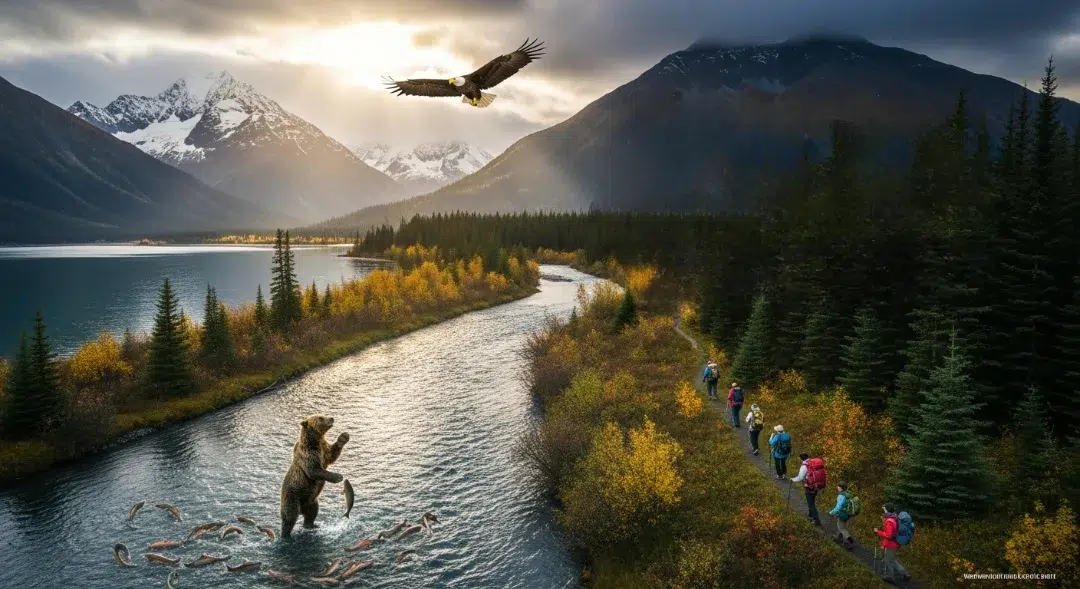
For those seeking adventure on foot, Alaska offers some of the most breathtaking trails in the world:
- Denali National Park: The Savage River Loop and Mount Healy Overlook provide accessible routes with high chances of spotting moose and caribou.
- Glacier Bay National Park: Bartlett River Trail offers a mix of forest and tidal flats, ideal for birdwatching.
- Kenai Fjords National Park: The Harding Icefield Trail is a challenging but rewarding hike with glacier views.
- Wrangell–St. Elias National Park: Root Glacier Trail allows hikers to walk directly on glacial ice with proper gear.
- Lake Clark National Park: Tanalian Falls Trail combines waterfalls, forests, and wildlife encounters.
These trails showcase the diversity of Alaska adventure travel, from easy walks to multi-day backcountry treks.
Must Read: 18 Most Dangerous Hiking Trails in National Parks Across The Globe That Only True Adventurers Can Conquer
Practical Travel Tips for 2025
- Best time to visit Alaska: Summer is ideal for wildlife tours and hiking, fall is perfect for Fat Bear Week, and winter offers aurora viewing.
- Expectations in 2025: Fewer ranger-led programs due to staffing cuts, but private tours and cruises remain strong.
- How to prepare: Book early, especially for Denali and Glacier Bay. Consider guided wildlife tours for safety and expertise. Always follow Leave No Trace principles to protect fragile ecosystems.
Conclusion
Despite challenges in 2025, Alaska’s national parks remain some of the most extraordinary places on Earth. From the bears of Katmai to the whales of Glacier Bay, the state offers wildlife encounters and adventures that can’t be matched anywhere else. Travelers who plan ahead, respect nature, and embrace the wild spirit of Alaska will find experiences that last a lifetime.
Must Read: 15 Best USA National Parks & Natural Landscapes for Your Bucket List (2025)
Frequently Asked Questions (FAQs)
Q1. What is the best time to visit Alaska for wildlife?
Ans: The best time is June to early September, when bears, moose, and caribou are most active, and humpback whales can be spotted in coastal parks.
Q2. Which Alaska national park is best for seeing bears?
Ans: Katmai National Park is world‑famous for brown bears at Brooks Falls, especially during the salmon runs and the annual Fat Bear Week in fall.
Q3. Are Alaska’s national parks crowded in 2025?
Ans: Yes, tourism is at record highs, especially in Glacier Bay and Denali, but staffing cuts mean fewer ranger programs. Booking early is essential.
Q4. Can I hike in Alaska’s national parks without a guide?
Ans: Yes, many trails are self‑guided, like Denali’s Savage River Loop or Kenai Fjords’ Harding Icefield Trail. However, guided tours are recommended for safety.
Q5. What wildlife can I expect to see in Alaska?
Ans: Travelers often see bears, moose, caribou, whales, bald eagles, and sea otters. Each park offers unique encounters, from marine life in Glacier Bay to caribou in Kobuk Valley.
Q6. How are staffing cuts affecting Alaska parks in 2025?
Ans: Some parks, like Denali and Mendenhall Glacier, have reduced ranger programs and visitor services. Travelers should plan for more independent exploration.
Thank you for trusting Outdoorkeeda wildlife as your guide for your international travel needs. 🙏
